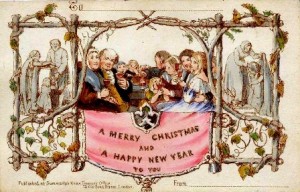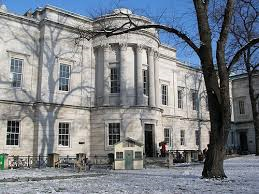London, England
Christmas cards have been a treasured part of the holiday season since the mid-19th century. From humble beginnings they have evolved into a massive industry, encompassing everything from simple, mass-produced Christmas greetings to family portraits to extensive letters detailing highlights from the previous year. They also account for a huge part of discretionary mail for almost every major postal service in the western world.
The first officially recognized mass produced Christmas card was introduced by Henry Cole in 1843. Cole had worked with the British postal service, and had helped to create the penny post a few years earlier. It is believed that he championed the cause of Christmas cards as a way to promote his penny post idea. The artwork, by J.C. Horsley, featured a picture of a family enjoying a holiday feast. Just over two thousand were produced, and they sold out quickly.
The idea of Christmas cards caught on like wildfire. Within a few decades, stationary stores all over the western world were producing them in the millions. Over the years Christmas cards evolved, branching out into all sorts of artisitic styles and subject matter. However, due in large part to alternatives such as e-cards, easily created homemade cards and portrait cards, the Christmas card tradition may be on the wane, and classic cards are becoming something of a collector’s item.
There are Christmas card collector’s all over the world. But two of the best known collections can both be found in London. One, that of Queen Mary, the more recent one, is in the British Museum. The other is at the Slade School of Fine Art. As of this writing there was no information available for the seasonal displays of the card collections. Web: www.britishmuseum.org (official website of the British Museum); www.ucl.ac.uk/slade (official website of Slade School of Fine Art).


Leave a Reply